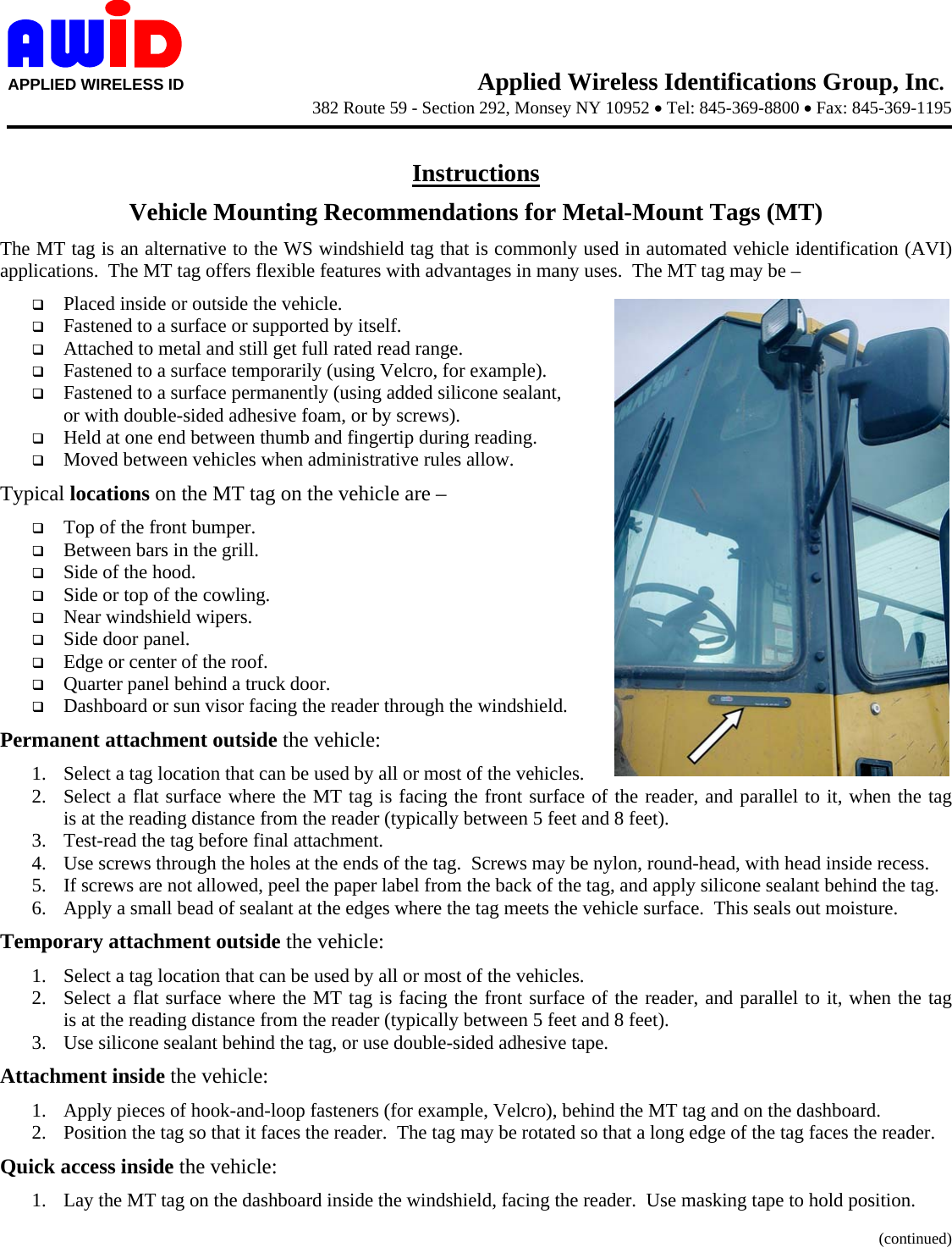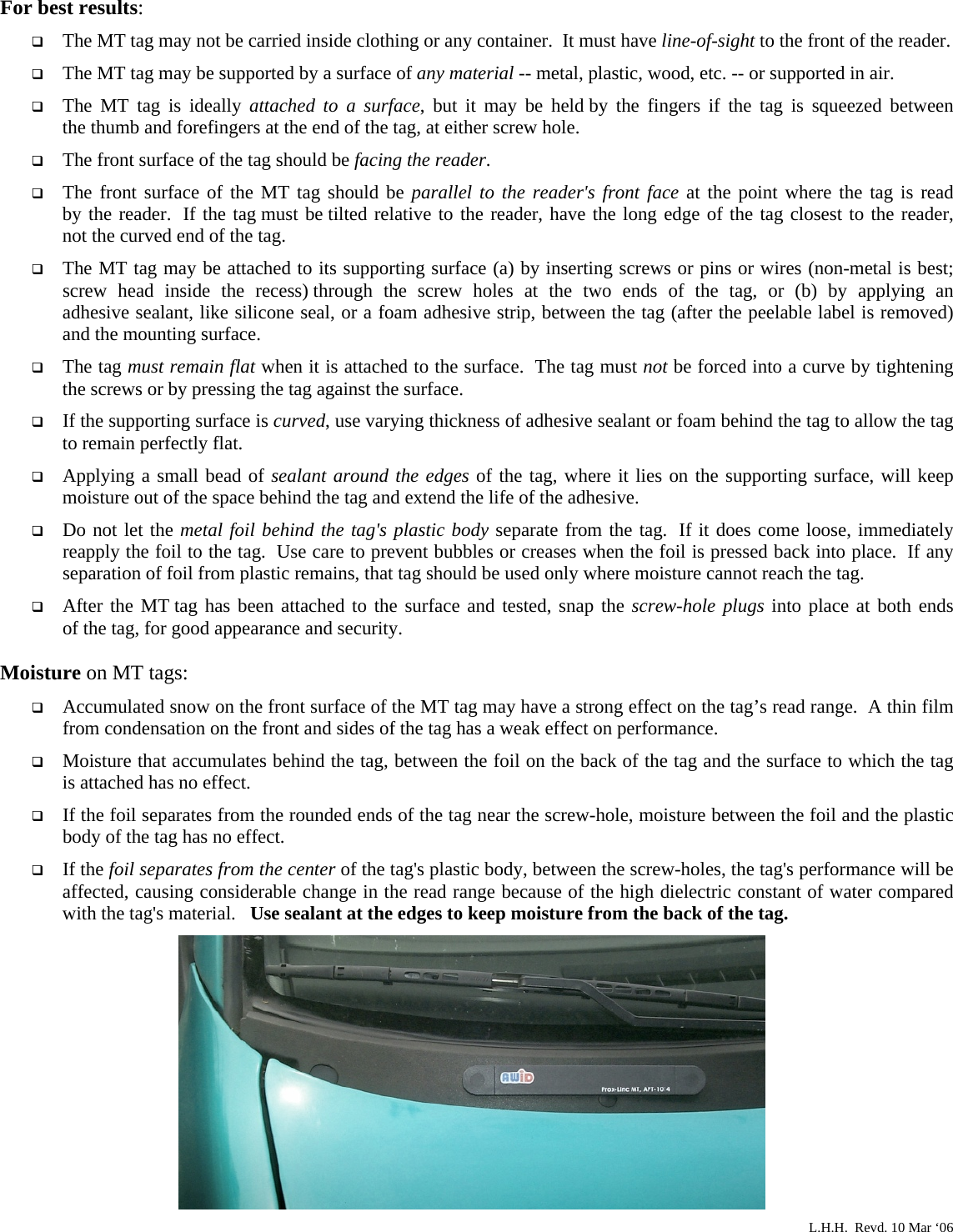Applied Wireless Identifications Group R26EA011 LR-911 and 2010AR RFID Reader User Manual Tag MT Mounting Recommendations
Applied Wireless Identifications Group Inc. LR-911 and 2010AR RFID Reader Tag MT Mounting Recommendations
Contents
- 1. GMSW Holding Instructions
- 2. LR911 Installation Instructions
- 3. Users Manual
- 4. Tag MT Mounting Recommendations
- 5. Tag WS Mounting Recommendations
Tag MT Mounting Recommendations

